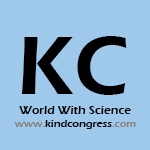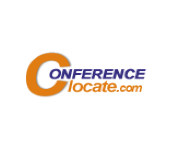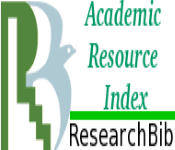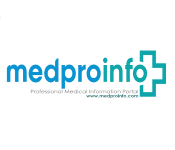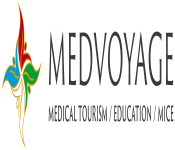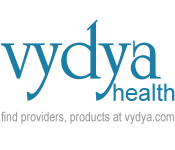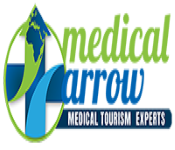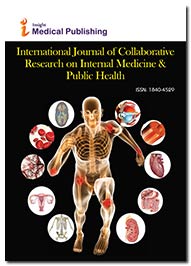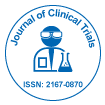Theme: Challenges in elimination of rare diseases and orphan drugs
Rare Diseases Meet 2020
We are very happy to announce this, with the good success of previous Rare Diseases Congress series, we are delighted to invite the participants all over the globe to attend “7th Global congress of Rare diseases and Orphan Drugs”, will be held during June 18-19, 2020 at Dubai, UAE. This includes prompt Keynote Presentations, Special Sessions, Workshops, Symposiums, Poster Presentations, Oral talks and Exhibitions in the field of Rare Diseases and Orphan Drugs.
Theme: “Challenges in elimination of rare diseases and orphan drugs”.
Rare Diseases refer to those medical aberrations which affect a very least number of the population. They are characterized by a wide diversity of disorders and symptoms that differs not only from disease to disease but also from individual to individual patient suffering from the same disease. About 80% of these disorders have predictable genetic origins while the others are the result of infections, allergies, neurological related and environmental causes. A medicinal product developed for the treatment of a Rare Disease is an Orphan Drug.
Why to attend?
World Rare Diseases 2020 is giving a worldwide stage to analysts that afford new insights into the concealed rare diseases. This conference will feature a global audience of scientific leaders, academia and health care professionals, and Orphan Drugs experts who are going to discuss today’s emerging treatments and diagnostics. It is designed to provide an educational forum that stimulates clinical, research, government and patient communities to create a coordinated and comprehensive approach for advancing the implementation of research, clinical care, care delivery coordination and other public health interventions critical to enhan​ced outcomes in Rare Diseases.
Target audience:
- Dermatologists
- Pharmaceutical Companies and Industries
- Health care professionals
- Students
- Scientists
- Researchers
- Training institutes
- Pharmacists
- Drug manufacturing companies
- Bacteriologists
- Virologists
- Ophthalmologist
- Microbiologists
- Mycologists
- Orphan Drugs Companies
- Students
- Patient Groups
- Cardiologists
- Medical Devices Manufacturing Companies
- Laboratory Technicians and Diagnostic Companies
- Anesthesiologists
- Neurologists
- Parasitologists
- Business Entrepreneurs and Industrialists
- Epidemiologists
- Rare disease associations
- Infectious Diseases Specialists
- Pathologists
Track 1: Orphan diseases and public health
The field of rare diseases is complex and heterogeneous and suffers from a deficit of scientific and medical knowledge .The landscape of rare disease is constant evolving the new rare diseases and conditions being reported and identified regularly in medical literature. Apart from a few rare diseases where significant progress has been made, still the field is nascent stage. For a long time, doctors, researchers and policy makers were unaware of rare diseases and until very recently no real research or public health policy concerning issues related to the field .This posses challenges in development of comprehended policy on rare diseases. Nevertheless, it is important to take step, in the short as well as long term, with the objective of talking rare diseases in a comprehensive and holistic manner.
Track 2: Allergic and Immunologic Disorders
Allergy is one of the most adverse immune reaction faced by worldwide population which is next accompanied by inflammation. The set of conditions caused by Hypersensitivity reactions of the immune system in response to any foreign substance is called allergy/ allergic diseases. It may arise due to environmental or genetic factors. The causative agents are known as allergen and they may be food, drug, dust, pollen, animal dander &fur etc. varying for each individual. Most allergen immunotherapies are the advanced therapeutics method to treat the allergies. The localized body part which gets hot, swollen, red and painful after an injury or infection is an condition termed as inflammation and it might be due to allergy: Allergic inflammation or due to tumour. Inflammation can be chronic or acute and it consists of different types based on the part of inflammation.
Track 3: Paediatric Rare Diseases
The majority of rare diseases affect children, most of whom have an underlying genetic cause for their condition. However, making a molecular diagnosis with current technologies and knowledge is often still a challenge. Pediatric genomics is rapidly evolving field but it is not well developed, that tackles this problem by incorporating next-generation sequencing technologies, especially whole-exome sequencing and whole-genome sequencing, into research and clinical workflows. This difficult multidisciplinary approach, combined with the ascending availability of population genetic data variation, has already resulted in an increased discovery rate of causative genes and in improved diagnosis of rare paediatric disease. Substantially, for affected individual family members, a good and thorough understanding of the genetic basis of rare disease translates to more perfect prognosis, management, surveillance and genetic advice; stimulates research into new therapies; and enables provision of better support.
Track 4: Infectious Diseases
Many of the terms are normally used in describing the infectious diseases. Disease refers to the presence of pathology and an infectious disease is an infection caused by a microorganism. Virulence is a term referring to the power of an organism to produce disease in a particular host. Immunity refers to the degree of resistance of the host for a specific microbe. Many infectious maladies, such as measles and chickenpox, can be anticipated by vaccines. Infectious diseases can cause many distinctive symptoms. Some are mild that you may not even notice the any side effects, while others can be the life-threatening. There are medicinal products for a few infectious diseases, but for others, such as a few viruses, you can only treat your symptoms.
Track 5: Clinical Trials and Treatment
A clinical trials are the experimental designed to determine various scientific and consequence aspects of proposed treatment. It is important to remember that there is no guarantee a proposed treatment will be effective. Families should be prepared to balance the hope of participating in a clinical trial with the understanding that the therapy may not be optimal and could result in a serious negative outcome. Since some rare diseases can progress quickly, families often are willing to participate in risky, unknown treatments. Before agreeing to participate, everyone involved should fully understand these risks by carefully reading the consent documents and asking questions of the trial investigators. Most clinical trials related to treatments of rare diseases goes through 3 major phases.
Track 6: Rare Neurological Disorders
Neurological disorders are the diseases associated with the spine, brain and the nerves that connect them. It affects the body nervous system. Aicardi-Goutieres, Reflex Sympathetic Dystrophy, Acarida syndrome are few rare specified neurological disorders to specify. The central nervous system affected by Rare Neurological Disorders usually develops in infancy and is inherited in an autosomal recessive manner. The symptoms of the stage I are characterised as stunted growth, vomiting, and diarrhoea. Symptoms exhibited in stage II are example such as optic atrophy, uncoordinated movement, dystonia, hypotonia, and peripheral neuropathy. The symptoms of stage III are dysarthria, acute muscle and dysphagia, atrophy is common, with death being the outcome. It is necessary to study the physiological defects of brain and muscle structures in LS for proper diagnosis and treatment.
Track 7: Neglected Rare Tropical Diseases
Neglected tropical diseases are a bunch of bacterial and parasitic infections that affect more than including 1 billion population and cost developing economies billions of dollars each year, 836 million children. They are regularly as possible clustered together topographically and people are habitually afflicted with more than one contamination or parasite. Successful controls can be accomplished when chosen open wellbeing approaches are combined and passed on locally. Trade are guided by the local epidemiology and the accessibility of fitting measures to recognize, expect and control diseases. Various dismissed tropical diseases can be expected, disposed of or indeed demolished with made strides get to existing secure and cost-effective gadgets. Control depends on straightforward mediations that can be carried out by non-specialists too.
Track 8: Gene Therapy for Rare Diseases
Gene Therapy mainly involves the introduction or alteration of genetic material within a cell or organism with an intention of curing the disease. Both gene therapy and cell therapy are overlapping fields of biomedical research with the goals of repairing the direct cause of Genetic diseases in DNA or cellular population respectively, the discovery of recombinant DNA technology in the 1970s provided tools to develop gene therapy efficiently. Scientists use these techniques to readily manipulate viral genomes, isolate genes and identify mutations involved in human diseases, characterize and regulate gene expressions, and engineer various non- viral and viral vectors. Various long-term treatments for anaemia, haemophilia, cystic fibrosis, muscular dystrophy, Gauscher’s disease, lysosomal storage diseases, cardiovascular diseases, diabetes and diseases of bones and joints are resolved through successful gene therapy.
Track 9: Hematologic Disorders
Hematology of rare diseases fall into various subcategories, including anaemia-type red blood cell conditions (e.g. sickle cell beta thalassemia, Diamond-Blackfan anemia), white blood cell dysfunctions related with different malignancies , immuno- platelet-based abnormalities that influence platelet and plasma cell disorder. Some rare blood disorders especially those that are gene-based are simple to distinguish with a basic test, whereas others require significant investigator work to effectively analyze. Due to the expansive number of blood conditions exceptional and common, haematologists tend to be gifted agents since they got to be pros in different conclusion.
Track 10: Rare Obesity and Metabolic Disorders
Obesity can be preventable through a combination of social changes and personal choices. Diet plan and exercising are the main treatments. Diet quality can be improved by doing less consumption of energy-dense foods, such as those high in fat or sugars, and by increasing the intake of Fibrous food and rich in all type of protein. Various ways can be adopted to reduce appetite or decrease fat absorption by Medications, along with a suitable diet.
Disorders can be present at birth, and many can be identified by routine screening of the body. If a metabolic disorder is not identified in the early stage, then it may be diagnosed later in life, when symptoms appear. The genetic metabolic disorders can be diagnosed by specific blood and DNA test. In terms of pathophysiological/mechanism interactions, the abnormal gut microbiome can play a role in metabolic disorder related to obesity.
Track 11: Rare Oncology Diseases
Rare cancers can originate in any organ of the body incorporate gastronomes, childhood acute myeloid leukaemia, schwannomas, retinoblastomas, or thymomas. For a portion of these diseases, specific medications have not yet been produced. All in all, in any case, inquire about in is greatly dynamic, with numerous medications either or being developed. The various kinds of incorporate tumours of the body and haematological of the blood. Independently these malignancies are uncommon, as a gathering, they of individuals with cancer. Treatment for is typically collaboration, with general professionals, oncologists, haematologists, radiation specialists, and different with each other.
Track 12: Rare Oral Diseases
Oral-facial-advanced (OFDS) is an umbrella term for no less than 10 obviously unique hereditary disorders that are described by irregularities and flaws in the improvement of the structure of the oral cavity including the mouth, tongue, teeth, and jaw; the advancement of the facial structures including the head, eyes, and nose; and the fingers and toes; alongside varying degrees of mental disorder. The introduction of signs and side effects is to a great degree varied, making determination difficult. OFDS type I is the most widely recognized of these disorders, and it is very rare.
Track 13: Rare Aging Diseases
Aging is a combination of degenerative changes that happen in living beings that do not have the capacity to constantly recover. Age is a main risk factor for most collective neurodegenerative diseases. The most widely recognized rare condition that involves in Aging is Progeria, an extremely rare autosomal dominant genetic disorder in which symptoms approaching characteristics of aging are revealed at a very early age. Progeria is one of several progeroid syndromes. Those born with progeria typically live to their teenager to early twenties. It is a genetic condition that happens as a new mutation, and is hardly inherited, as carriers generally do not live to reproduce. Studies have demonstrated that 37.5% had conventional life expectancy, 25.7% potentially lethal during childbirth or before 5 years of age, 36.8% reduced life expectancy.
Track 14: Rare Genetic Diseases
The human ordination is continually exposed to varied sources of desoxyribonucleic acid injury. Rare genetic diseases are specifically caused by changes in genes or chromosomes, often go from one generation to next. Most of these diseases are regularly connected with severe or life threatening features. Numerous rare diseases seem early in life, and around 30% of children with rare diseases will die before achieving their fifth birthday. With a single analysed patient just, ribose-5-phosphate isomerase deficiency is viewed as the rarest known genetic disease. Frequency of a single rare genetic disease can fluctuate broadly yet is generally very infrequent, usually to or less than one per 1,00,000 births.
Track 15: Rare Cardiac Diseases
The most widely recognized inherent heart defect related to Kounis syndrome might be an episode of angina or even a heart attack activated by an allergic reaction. The syndrome was named later Professor Nicholas G Kounis, a Greek cardiologist, who initiate that the syndrome is caused by chemical substances, for example, histamine, which are discharged by the body during an allergic reaction. These chemicals compounds cause the arteries that supply the heart with blood to go into fit, in this manner constraining the bloodstream and causing angina-like chest pain. Torsade de pointe is a risky anomalous heart rhythm that can ready sudden cardiovascular death.
Track 16: Orphan Drugs- Development Trends and Strategies
An Orphan drug might be a medicative item produced for the treatment of a rare disease. Analysis and the treatment of a rare disease wind up complex due to the conditions that various healthcare providers may have confined contribution with the recognizable proof of the specific disease condition with the diagnosis of rare diseases. Biopharmaceutical specialists in the field have used new advances and the creating investigative appreciation of numerous rare diseases to create and analyze remarkable treatments in the course of the most recent 10 years. In 2015 alone, about half (47%) of novel latest drug approvals were for rare diseases. In this way, the current economic situation in addition to the tremendous generic competition moved the focal point of pharmaceutical organizations from the basic medicines to the new business model — niche busters, also called orphan drugs.
Track 17: Drug Approvals for Rare Diseases
The Orphan Drug gives orphan remaining to medication and biologics that area unit illustrated as those gathered for the safe and effective treatment, assignment or impedance of rare diseases that affect less than two hundred people inside the U.S., or that affect more than two hundred people anyway don't appear to be relied upon to recoup the costs of creating and promoting a treatment drug. The objective of the Orphan store Clinical Trials Grants Program is to support the clinical improvement of stock to be utilized in rare diseases or conditions. Last, the Pediatric Medical Device Safety and Improvement Act of 2007 (Public Law 110-85) licenses HDE approved devices expected to be utilized in paediatric patients or in an exceedingly paediatric populace and affirmed.
Track 18: Future Hereditary of Rare Diseases and Orphan Drugs
Work in the course of recent years has brought about the identification of qualities in charge of ~50% of the evaluated 7,000 rare monogenic infections and it is anticipated that the majority of the rest of the disease-causing qualities will be distinguished constantly 2020 and likely sooner. This checked acceleration is the aftereffect of dramatic improvements in DNA-sequencing innovations and the related examinations. We scrutinize the fast development of rare-disease hereditary analysis and effective techniques for quality identification. We feature the effect of discovering rare-disease-causing genes, from clinical diagnostics to bits of knowledge picked up into biological mechanisms and common diseases. Last, we investigate the expanding therapeutic opportunities and difficulties that the subsequent development of the ' Atlas ' of human hereditary pathology will bring.
Rare Disease Treatment Market size is experience significant growth from 2019 to 2025. Increasing prevalence of rare diseases across the world will stimulate rare disease treatment market growth in the coming years. Rare diseases or orphan diseases are conditions that affect a small percentage of population at any given time. According to the U.S. Food & Drug Administration (FDA), an orphan disease is defined as a disease or condition affecting less than 200,000 people in the country. Orphan Drugs Act under the U.S. legislation allows manufacturer to request FDA to grant an orphan drug status to drugs intended to treat a rare disease or condition.
The Objective of the "Global Rare Disease Drugs Market" report is to depict the trends and upcoming for the Rare Disease Drugs industry over the forecast years. Rare Disease Drugs Market report data has been gathered from industry specialist/experts. Although the market size of the market is studied and predicted from 2019 to 2028 mulling over 2016 as the base year of the market study. Attentiveness for the market has increased in recent decades due to development and improvement in the innovation
Additionally, rising investment in rare diseases treatment categories and introduction of new drugs will boost the market growth in the coming years. For instance, more than 560 drugs are in development for the treatment of rare disease. Therapies in development include treatment for amyotrophic lateral sclerosis, multiple myeloma, cystic fibrosis and enzyme deficiency disorders. Rising government initiatives for spreading awareness regarding rare diseases along with presence of suitable healthcare infrastructure in developed and developing economies will drive the industry growth.
Market Research Growth on Rare Diseases and Orphan Drugs
Nearly there are 7,000 different types of Rare Diseases and disorders it has estimated that 30 million people in the United States, 30 million in Europe and 350 million people over the globe suffer from Rare Diseases. Four by fifth of Rare Diseases are genetic in origin, among them affected individuals 50% of them will be children. The Rare Diseases are distributed in such a way that four fifth of the cases accounted by some 350 Rare Diseases. About only 5% of rare diseases are having approved drug treatment with only 326 new drugs being approved from the FDA and brought in to the market.
In 2018, Orphan Drug sales were of the order of 93 billion. Orphan Drugs represented 35% of the industry’s new drug approvals. The genetic diseases are subdivided by therapeutic area, which was leading the global market in the past will show similar traction in the coming next eight years. This segment is anticipated to be valued at US$ 56,241 by the end of 2025. According to Statistics of MRC, the Global Orphan Drug market is estimated at $145.89 million in 2018 and is expected to reach $265.63 million by 2022 growing at a CAGR of 10.5% from 2018 to 2022.
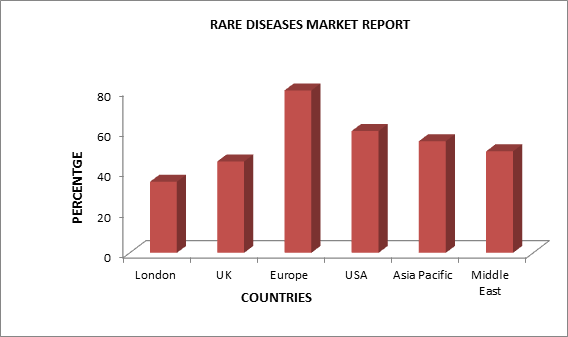
Why it’s in Dubai, UAE:
Dubai is a city in the United Arab Emirates, situated inside the emirate. The emirate of Dubai is situated on the southeast shoreline of the Persian Gulf and is one of the seven emirates that make up the nation. It has the most population in the UAE (2,106,177) and the second-biggest land an area by region (4,114 km2) after Abu Dhabi. It is one of only a handful couple of urban communities on the planet that has withstood such a quick transformation from an obliging start as a pearl-jumping focus - to one of the quickest developing urban areas on earth. Dubai nowadays is a business endeavour, exchange and supply centre. It is conjointly thought of dynamic core of the Arabian Gulf area. With year-round sunshine, fascinating deserts, lovely beaches, luxurious hotels and shopping malls, eye-catching heritage attractions and a prosperous business community, Dubai receives millions of leisure and business visitors each year from around the world is one of the few cities in the world that has withstood such a rapid conversion- from a courteous beginning as a pearl-diving centre - to one of the fastest growing cities on earth and has attained itself the name of being the ‘gateway between the east and therefore the west'.
Major Associations Associated with Rare Diseases Research:
- Alzheimer's disease Organizations
- Ann & Robert H. Lurie Children’s Hospital
- Birmingham children’s Hospital
- Boston Children’s Hospital
- Canadian Organization for Rare Diseases
- Chicago Rare Disease Foundation
- Children’s hospital of Pittsburgh
- Comer Children’s Hospital – University of Chicago
- Cystic Fibrosis Foundation
- European Union Committee of Experts on Rare Diseases
- EURORDIS Rare Diseases Europe
- Every Life Foundation for Rare Diseases
- Global Genes Allies in Rare Diseases
- Guardian Hands Foundation
- Hospitals Associated with Rare Diseases Research
- IRDR Intractable & Rare Diseases Research
- Japan Patient Association
- Multiple Myeloma Research Foundation
- National Alliances for Rare Diseases
- National Institute of Health (NIH)
- National Organization for Rare Diseases
- NDC Medicine
- Organization for Rare Diseases India (ORDI)
- Orphan Europe
- Philippine Society for Orphan Disorders
- Rare Disease UK
- Rare Diseases or Syndromes and Clinical Societies
- Rare Diseases Foundation, Iran
- Rare Diseases Patient Association Funding
- Rare Diseases South Africa
- Rare Diseases Translational Research Collaboration
- Rare Disorders Society Singapore
- RARE Foundation Alliance
- Royal Society of Medicine
- Short Bowel Syndrome Foundation
- Students4RareDiseases
- The Asia-Pacific Alliance of Rare Disease Organisations
- The Boler-Parseghian Centre for Rare & Neglected Diseases
- The Children’s Hospital of Philadelphia
- The Every Life Foundation for Rare Diseases
- The Genetic and Rare Disorders Organization
- The Greek Alliance for Rare Diseases
- The Manton Centre for Orphan Disease Research
- U.S. Food and Drug Administration
- UCLA Health
- US hospital for Rare Disease Research
Major Universities Associated with Rare Diseases Research
- Anahuac University North Campus, Mexico
- Australian National University, Australia
- Benha University, Egypt
- Birmingham City University, UK
- Center for Clinical Pharmacology, Belgium
- Center for Rare Neurological Diseases, USA
- Charles Darwin University Casoria Australia
- Columbia University Medical Center, United States
- Columbia University, USA
- Curtin University Bentley, Australia
- Dar Al Uloom University, Saudi Arabia
- Duke University, USA
- Emory University, USA
- GMEC, The Global Medical Excellence Cluster
- Guangzhou Medical University, China
- Harvard University, United States
- Harvard University, USA
- Imperial College London, United Kingdom
- Infection Control University
- Iqbal Chest Centre, Bangladesh
- John Hopkins University, USA
- Johns Hopkins University, United States
- Karolinska University, Sweden
- Kindai University, Japan
- King Saud Bin Abdulaziz University, Saudi Arabia
- King's College London, UK
- Kumamoto University, Japan
- Linnaeus University, Sweden
- Macquarie University, Australia
- Mayo Clinic College of Medicine, USA
- McGill university Montréal, Canada
- McMaster University, Canada
- Medi7 Bentleigh, Australia
- Murdoch University Murdoch, Australia
- National Institutes of Health, USA
- Newcastle University, Australia
- North-western University, Qatar
- Osaka University, Japan
- Oxford University, UK
- Philip Morris International R&D, Switzerland
- Pompeu Fabra University, Spain
- Queen Mary University, UK
- Radboud University Medical Center, Netherlands
- Rare Genomics Institute, USA
- Research Institute of Hospital del Mar, Spain
- Rizzoli Orthopedic Institute, Italy
- Samsung Medical Center, South Korea
- St George’s University of London, UK
- St. George Hospital, Australia
- Stanford University, USA
- Tasmanian Health Service, Australia
- The Chest & Heart Association of Bangladesh, Bangladesh
- The Fourth Hospital of Harbin Medical University, China
- The Jikei University School of Medicine, Japan
- The Third Affiliated Hospital of Guangzhou Medical University, China
- The University of Newcastle, Australia
- Tufts university, United States
- United Hospital, Bangladesh
- University College London, UK
- University of British Columbia, Canada
- University of Buffalo, United States
- University of California Los Angeles, United States
- University of California, USA
- University of Cambridge, USA
- University of Canberra Bruce, Australia
- University of Celiac Disease Center, USA
- University of Chicago Medicine, USA
- University of Colorado, USA
- University of Groningen, Netherlands
- University of Lincoln, UK
- University of London Imperial College of Science Technology and Medicine, UK
- University of Maastricht, Netherlands
- University of Maryland Medical Center, Australia
- University of Maryland Medical Center, United States
- University of Melbourne, Australia
- University of Minnesota, United States
- University of Newcastle, Australia
- University of Pennsylvania, USA
- University of Pittsburgh Study
- University of Pittsburgh, USA
- University of Queensland, Australia
- University of Tasmania, Australia
- University of Toronto, Canada
- University of Valencia, Spain
- University of Washington, USA
- University of Zurich, Switzerland
- University-of-the-sunshine-coast, Australia
- Weill Cornell Medical College, Qatar
- Wits University, South Africa
- Yale University School of Medicine, USA
- Yonsei University, South Korea
Major Companies Associated with Rare Diseases and Orphan Drugs
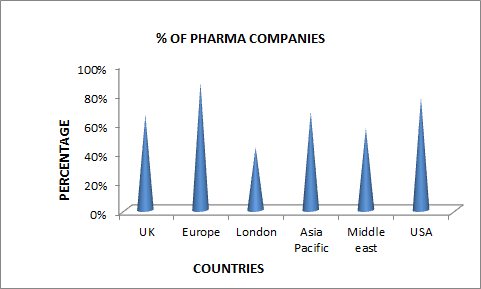
- 700thespians Limited, UK
- Abbott Laboratories, UK
- Actavis, USA
- Aegerion Pharmaceuticals, Japan
- Alexion Pharmaceuticals Inc., Switzerland
- Almirall, Spain
- Amgen, USA
- Amicus Therapeutics, USA
- Amphastar Pharmaceuticals, Inc.
- Araim Pharmaceuticals
- Astellas Pharma US
- AstraZeneca, Switzerland
- AstraZeneca, UK
- Baxter International Deerfield
- Bayer HealthCare, Germany
- Bayer, Germany
- Beacon Pharmaceuticals, Bangladesh
- Biotie Therapies Corp, Finland
- Bioxyne Limited, Australia
- Boehringer Ingelheim, Germany
- Celgene, Switzerland
- Centrapharm Ltd, UK
- Chiesi Pharmaceutical, Italy
- Clalit Health Service, Israel
- Cohero Health, USA
- Daiichi Sankyo Europe, Germany
- Daiichi Sankyo, Japan
- Dohmen Life Science
- Elma Research, UK
- European Medicines Agency
- Focus Scientific Research Center (FSRC), phamax, India
- Forest Laboratories, USA
- Gecko Health, USA
- Generics (UK) Ltd, UK
- Genus Oncology Vernon Hills, USA
- Genzyme, USA
- Gilead sciences, USA
- GlaxoSmithKline, UK
- Global Data, UK
- Gsk, London
- Hormosan Pharma, Germany
- Hormosan Pharma, Germany
- Ikris Pharma Network Pvt Ltd, India
- Ikris Pharma Network Pvt Ltd, India
- Kissei Pharmaceutical Co., Ltd, Japan
- Kyowa Hakko Kirin Co. Ltd, Japan
- Lallemand Pharma, Switzerland
- Life Arc, UK
- Marathon Pharmaceuticals
- Merck & Co, USA
- Millennium Pharmaceuticals
- Napp Pharmaceuticals Ltd, UK
- Novartis, Switzerland
- NPS Pharmaceuticals
- Octapharma, USA
- Onyx Pharmaceuticals, USA
- Otsuka Holdings Co., Ltd, Japan
- Panmira Pharmaceuticals, LLC, USA
- Pearl Therapeutics, Inc.
- Pfizer, USA
- PharmaMar, USA
- Prosensa, Netherlands
- PT Boehringer Ingelheim, Indonesia
- Queensland Respiratory Laboratory Pty. Ltd, Australia
- Ranbaxy Laboratories Limited
- Raptor Therapeutics
- Roche, Switzerland
- Samsung Medical Center, South Korea
- Sanofi, France
- Sarepta Therapeutics, USA
- Sigma-Tau Pharmaceuticals, Italy
- Sunovion Pharmaceuticals, USA
- Swedish Orphan Biovitrum AB, Sweden
- Takeda, Japan
- TriStem Corp Ltd, UK
- Vertex Pharmaceuticals, USA
- ViroPharma
- ViroPharma, USA
- Visionary Pharmaceuticals, Inc., USA
- Yungjin Pharm Ind. Co., Ltd, South Korea
Summary:
Rare Diseases are that affects a small percentage of the population all over the world. An Orphan Disease is Rare Diseases with a lack of a market large enough to gain support and sources for discovering treatments for it, with advances to research in orphan diseases advantageous conditions to creating and selling such treatments. Rare diseases are genetic and are present throughout the entire life of individual suffering, even if symptoms do not immediately appear. Many Rare Diseases seems to appear early in life, and about 30% of children affecting with rare pediatric diseases will die before getting 5 year old. Rare Diseases are generally genetic and so they chronic. It is estimates that at least 80% of them have identified genetic origins. Other Rare Diseases are the result of infections and allergies or it may be due to degenerative and proliferative causes and discovering the well-advanced treatments in Rare Diseases and Orphan Drugs.
Conference Highlights
- Orphan diseases and public health
- Allergic and Immunologic Disorders
- Pediatric rare diseases
- Infectious Diseases
- Clinical Trials and Treatment
- Neglected Rare Tropical Diseases
- Hematological Disorders
- Gene Therapy for Rare Diseases
- Rare Obesity and Metabolic Disorders
- Rare Neurological Disorders
- Rare Oncology Diseases
- Rare Oral Diseases
- Rare Aging Diseases
- Rare Genetic Diseases
- Rare Cardiac Diseases
- Orphan Drugs- Development Trends and Strategies
- Drug Approvals for Rare Diseases
- Future Hereditary of Rare Diseases and Orphan Drugs
To share your views and research, please click here to register for the Conference.
To Collaborate Scientific Professionals around the World
| Conference Date | June 18-19, 2020 | ||
| Sponsors & Exhibitors |
|
||
| Speaker Opportunity Closed | |||
| Poster Opportunity Closed | Click Here to View | ||
Useful Links
Special Issues
All accepted abstracts will be published in respective Our International Journals.
- Journal of Bacteriology & Parasitology
- Journal of Infectious Diseases & Therapy
- Journal of Medical Microbiology & Diagnosis
Abstracts will be provided with Digital Object Identifier by




